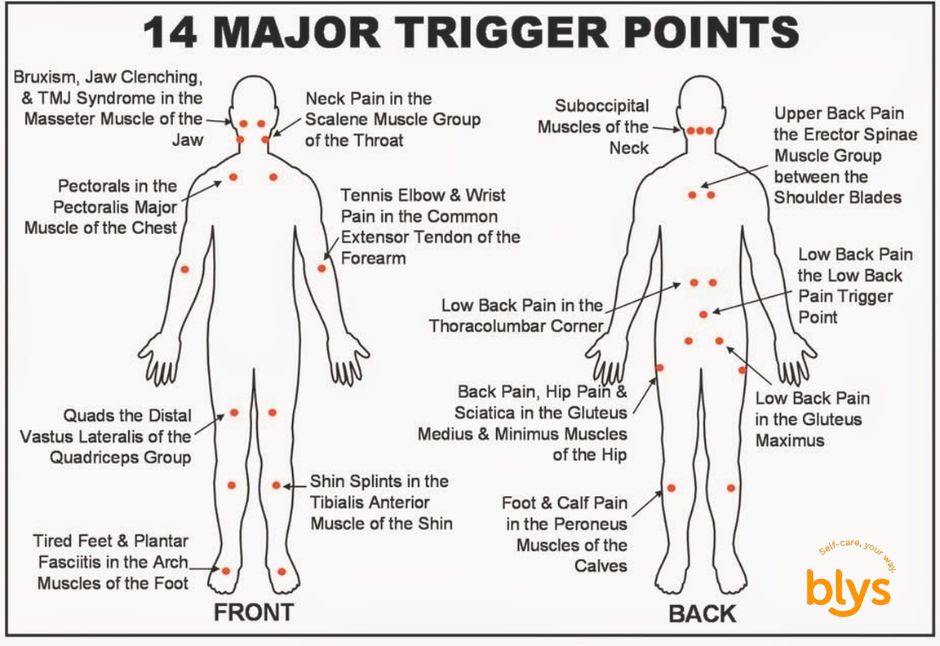
Understanding Deep Tissue Massage
Deep Tissue Massage Definition and Techniques
Deep tissue massage is a highly effective therapeutic technique that plays a crucial role in alleviating tension in the muscles located beneath the surface of the body. By focusing on the deeper layers of muscle and surrounding tissues, this method helps restore balance and promote overall well-being.
The practice involves the application of firm pressure and slow, deliberate strokes, which can be particularly beneficial for individuals dealing with musculoskeletal issues, such as strains and sports injuries. We understand that these conditions can be both physically and emotionally taxing, and deep tissue massage offers a compassionate approach to healing, helping you regain comfort and mobility.
Benefits of Deep Tissue Massage for Chronic Pain Relief
Deep tissue massage is an effective approach to chronic pain relief, utilizing various mechanisms to relax tense muscles, tendons, and joints while also helping with stress and anxiety. Regular massage sessions can lead to a substantial decrease in chronic pain, enhanced muscle function, and an overall improvement in well-being.
This treatment is particularly beneficial for areas that are often tight and contracted, such as the neck, lower back, and shoulders. It also helps in quicker recovery from acute pain, promoting both physical and psychological benefits.
Who Should Get Deep Tissue Massage? Ideal Candidates
Deep tissue massage is particularly beneficial for individuals who engage in physically demanding activities, such as runners and athletes, as well as those dealing with injuries or chronic pain. This form of massage is essential for construction workers, truck drivers, and other blue-collar professionals who perform heavy lifting and rely on their muscles throughout the day.
Additionally, individuals with desk jobs often suffer from muscle tension and poor posture due to prolonged sitting. For these workers, regular deep tissue massages can help alleviate discomfort and promote better posture. Furthermore, those recovering from minor muscular injuries, whether from accidents or sports-related activities, will find deep tissue massage to be a supportive therapy that aids in their recovery process.
Exploring Trigger Point Therapy
Trigger Point Massage Definition and Techniques
Trigger point therapy is a specialized soft tissue technique designed to alleviate painful tension in muscles and fascia, often experienced as knots. These knots can lead to discomfort and restricted movement, making trigger point therapy an effective approach for relief.
The technique involves applying pressure to specific trigger points, which helps to increase blood flow to the area while flushing out waste materials. This process not only promotes healing but also reduces pain and tension in the affected muscles.
For a detailed guide on trigger point massage, check out o ur blog on What is Trigger Point Massage?
ur blog on What is Trigger Point Massage?
Benefits of Trigger Point Therapy for Muscle Knots
Trigger point therapy is designed to effectively release tight, knotted muscles throughout your body, providing relief from pain, stiffness, and discomfort. By concentrating on specific muscle knots, this therapy works to relax these areas, easing pain and improving mobility. Additionally, it increases flexibility and enhances the range of motion, empowering individuals to engage more fully in their daily activities.
Who Needs Trigger Point Therapy? Ideal Candidates
Trigger point therapy can be beneficial for a variety of individuals experiencing muscle discomfort and related issues. According to a Medical Evolution blog, here are some ideal candidates for this effective treatment:
- Individuals experiencing chronic muscle pain
- People with limited range of motion due to muscle tightness
- Athletes seeking to enhance performance and prevent injuries
- Individuals looking for a non-invasive alternative to medication for pain management
- Individuals with myofascial pain syndrome (MPS)
- People with tension headaches or migraines caused by muscle tension
- Patients recovering from injuries or surgeries resulting in muscle imbalances or scar tissue formation
- Individuals with conditions such as fibromyalgia, arthritis, or repetitive strain injuries
Key Differences Between Deep Tissue Massage and Trigger Point Therapy
Scope of Treatment: Deep Tissue vs. Trigger Point Therapy
The following table shows the differences between deep tissue and trigger point massage in terms of the focus area, techniques, target areas, intensity and pressure application.
| Aspect | Deep Tissue Massage | Trigger Point Therapy |
| Focus | Releases tension in deeper muscle layers | Targets specific knots or areas of sensitivity |
| Tools Used | Uses forearms, elbows, and fists for deeper pressure | Applies pressure using fingers, knuckles, or elbows |
| Target Areas | Deeper layers of muscle and connective tissues | Specific points known as knots or adhesions |
| Pressure Application | Generally involves broader strokes and deeper pressure | Concentrated pressure on specific trigger points |
| Intensity | A more intense, and deeper pressure. | Targeted pressure that may vary in intensity. |
| Duration of Treatment | Typically longer sessions (60-90 minutes) for comprehensive relief. | Shorter sessions (30-60 minutes) focused on specific areas. |
| Recovery Time | May require more recovery time due to deeper pressure and soreness. | Generally less soreness, with quicker recovery. |
Techniques Used in Deep Tissue Massage vs. Trigger Point Therapy
| Technique | Deep Tissue Massage | Trigger Point Therapy |
| Pressure Application | Utilizes sustained, deep pressure to reach deeper layers of muscle. | Applies focused pressure directly on trigger points. |
| Strokes | Involves long, slow strokes and kneading to relax muscles. | Uses short, specific strokes to isolate and release knots. |
| Tools Used | Hands, forearms, elbows, and sometimes tools like massage balls. | Primarily fingers, knuckles, and elbows for precision. |
| Movement | Often includes gliding movements across larger muscle groups. | Involves static pressure held for several seconds. |
| Breathing Techniques | Encourages deep breathing to enhance relaxation. | May incorporate breathing to help release tension. |
| Assessment | Focuses on overall muscle tension and alignment. | Identifies specific trigger points through palpation. |
| Duration of Pressure | Pressure is applied for longer durations to release tension. | Pressure is often applied in short bursts, followed by rest. |
Treatment Goals: Deep Tissue vs. Trigger Point Massage for Pain Relief
The primary objective of trigger point massage therapy is to alleviate pain by releasing tight knots in the muscles. Deep tissue massage, on the other hand, focuses on loosening deeper layers of muscle tissue. Trigger point massage not only helps to ease discomfort but also promotes overall muscle relaxation, whereas deep tissue massage helps in the release of toxins stored in the muscles and enhances blood and oxygen circulation throughout the body.
Integrating Both Therapies for Maximum Pain Relief
The combination of deep tissue massage and trigger point therapy can provide a powerful, well-rounded session. When the fascia (the connective tissue around muscles) is loosened and trigger points (tight spots in the muscles) are released, the deep tissue massage can work better. This is because the muscles are more relaxed and open to the treatment, making it easier to relieve tension and pain.
Choosing the Right Therapy for You
Assessing Your Needs: Deep Tissue Massage or Trigger Point Therapy?
| Choose Deep Tissue Massage if: | Choose Trigger Point Therapy if: |
| You have chronic pain or tension throughout your body. | You are experiencing specific pain or muscle knots. |
| You enjoy a more intense massage experience. | You prefer a targeted approach to pain relief. |
| You want to improve overall muscle function and relaxation. | You want a shorter session focused on particular areas. |
Ultimately, the best choice depends on your individual needs. If possible, consider trying both therapies to see which one provides you with the most relief and comfort.
Consulting with Professionals for Personalized Massage Therapy
It is best to consult with a professional massage therapist to choose between deep tissue massage and trigger point therapy. These experts can assess your individual condition, recommend appropriate techniques, and help you achieve optimal relaxation and pain relief.
For a professional trigger point massage at your convenience, check out Blys and book a mobile trigger point massage session now!
Frequently Asked Questions (FAQs)
Can I receive both deep tissue and trigger point therapy in one session?
Yes, it is possible to receive both deep tissue and trigger point therapy in one session, as therapists can customize the treatment to address multiple areas of concern.
Is trigger point therapy painful?
Trigger point therapy can be uncomfortable or painful, especially when pressure is applied to tight knots in the muscles, but the level of discomfort varies from person to person.
How many sessions are typically needed to see results?
Many individuals may start to notice improvements after just one or two sessions, but a series of 3 to 6 sessions is often recommended for more significant and lasting results.
Are there any side effects to these therapies?
Common side effects of deep tissue and trigger point therapy may include temporary soreness, bruising, or fatigue, but these typically resolve within a day or two.
How do I find a qualified therapist for these treatments?
To find a qualified therapist, you can seek recommendations from healthcare providers, check online directories, or look for licensed massage therapists who specialize in deep tissue and trigger point therapy.
Conclusion
In conclusion, both deep tissue massage and trigger point therapy provide valuable benefits for pain relief and muscle relaxation, but they cater to different needs. Deep tissue massage is best for those with chronic pain and tension throughout the body, while trigger point therapy targets specific muscle knots for localized relief. Consulting with a qualified therapist can help you determine the most suitable approach for your individual condition. Ultimately, prioritizing these therapies can enhance your overall well-being and comfort.





